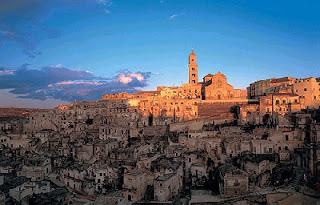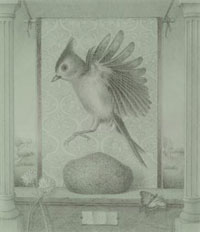One of the most fascinating books I have recently read is Eric R. Kandel's newly published book, "The Age of Insight. The Quest to Understand the Unconscious in Art, Mind and Brain. FromVienna 1900 to the Present". It is dense, interesting and challenging, as it details the many new discoveries of how the brain works and the many dimensions of humankind's involvement with art over millennia. There are so many aspects of the book that are worth talking about, but one short passage resonated with me because of my recent visit to South Italy, a place so rich in history.
In a chapter entitled "Artistic Universals and the Austrian Expressionists", Kandel delves into the large questions as to whether art has "universal functions and features" (p. 440). He goes on to state that, "Since the artist's creation of art and the viewer's response to art are products of brain function, one of the most fascinating challenges for the new science of mind lies in the nature of art." The questions then multiply: do we respond to art because our biology dictates our reactions, do we respond to art instead as individuals with our own personal experience and taste? Kandel refers to one opinion formed by Dennis Dutton, a philosopher of art, that art is not simply "a by-product of evolution, but rather an evolutionary adaption - a instinctive trait - that helps us survive because it is crucial to our well-being." (my emphasis)
Kandel goes on to allude to Cro-Magnon man painting those marvellous images in the Grotte Chauvet, 33,000 years ago, and reminds us that apparently, the Neanderthals, also living in Europe during that same period, did not create representational art. The conclusion which experts, such as social psychologist Ellen Dissanayake and art theorist Nancy Aiken, have reached is that art was a crucial means of binding people together during the Paleolithic age. People gathered together in communities and thus enhanced their likelihood of survival; one way to create this social glue was to make objects, images, and events that were important to these people, memorable and pleasurable. Just like the festivals celebrated all summer in Southern European towns and villages today, despite economic gloom; people enjoy themselves and reinvigorate their social ties, enhancing their daily life with religious or ceremonial events.
I immediately remembered two humble, but to me very powerful, objects I had seen and drawn quickly in the Matera Archaeological Museum in South Italy.
Upper Paleolithic stones from Matera area, South Italy, Prismacolor, Jeannine Cook artist
Hasty drawings, but what fascinated me was the literal binding-together marks that were on these stones, of a shape and size that would fit comfortably into a human hand. Just my interpretation of the marks, but I found them compelling. Even then, so many thousands of years ago, for the Upper Paleolithic age officially lasts from 45,000 to 10,000 years ago, our ancestors were scoring careful, thoughtful marks into stone, driven by a need to create art, art to bind those communities together most likely.
The fact that those stones can still compel our attention today makes an even stronger case for art's universal power to bind humans together.



































